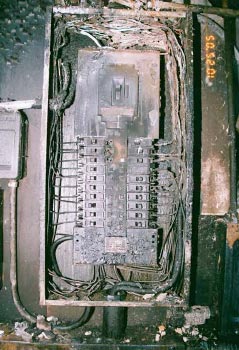Electrical Safety For Construction
The U.S. Consumer Product Safety Commission (CPSC) estimates that each year, about 4,000 injuries associated with electric extension cords are treated in hospital emergency rooms. About half of the injuries involve fractures, lacerations, contusions, or sprains from people tripping over extension cords. CPSC also estimates that about 3,300 residential fires originate in extension cords each year, killing 50 people and injuring about 270 others.

Methods of Receiving an Electric Shock:
-
From a defective power tool;
-
From defective extension cords;
-
From overloading a switch or over-riding a by-pass;
-
By not grounding electrical equipment;
-
By coming in close contact with live electric lines; or
- By coming too close to high power lines with the power arching over and making contact.
Ways to Avoid Electric Hazards:
-
Always inspect tools and equipment for frayed cords and defective plugs before using them;
-
Never use a power tool that has had the ground plug removed–inspect the plug;
-
Never stand in water and operate a power tool without proper (i.e., insulated) footwear;
-
Keep extension cords out of water when in use;
-
Consider all power lines “live” and avoid contact with them;
-
Disconnect all electrical tools and cords when not in use;
-
Be sure all temporary lighting is equipped with bulb covers;
-
Make sure all power supplies, circuit boxes, and breaker boxes are properly marked to indicate their purpose; and
-
Use Ground Fault Interrupters (GFIs) on all jobsites.
Practice electrical safety so you don’t get shocked!!
Download flyer: STOTW_436_Electrical Safety For Construction.pdf (313.51 kb)
Download Spanish flyer: STOTW_436_Electrical Safety For Construction_esp.pdf (313.21 kb)

